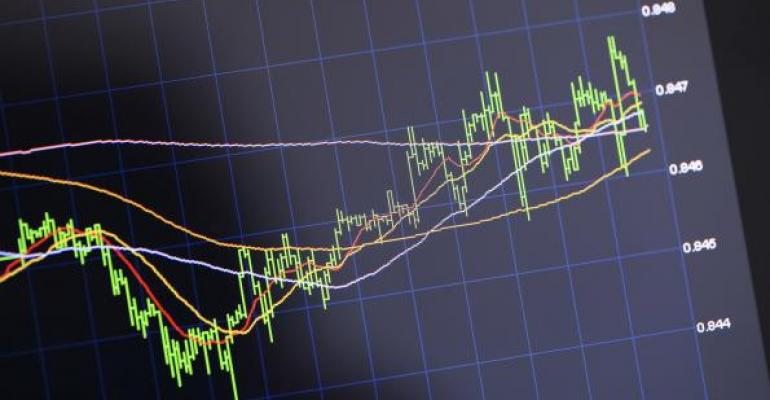It’s been a grinding year — and not a good one — for holders of the iPath US Treasury Steepener ETN (NYSE Arca: STPP). In each of the 12 months, the note’s lost an average of one percent as disinflationary expectations became evermore pervasive.
Barclays Capital launched STPP along with its opposite number, the iPath US Treasury Flattener ETN (NYSE Arca: FLAT), five years ago in a bid to attract investors into the yield curve business. Each note is keyed to the Barclays 2Y/10Y Yield Curve Index, a benchmark that simulates rolling investments — short and long — in two- and ten-year U.S. Treasury note futures. STTP buyers nominally bet on two-year note prices to rise (and yields to fall) relative to ten-year paper.
As you can see from the chart below, that’s been a bum wager recently. In the last 12 months, the unlevered two-year/ten-year curve has actually flattened by 90 basis points, or 40 percent.

There are signs, however, that the trend may soon reverse. The chart shows a head-and-shoulders bottom formed by price action over 2015’s first quarter. After bottoming at the $32 level in January, the STPP note price has risen raggedly above its 50-day moving average to form a right shoulder and is poised now to challenge the neckline intersecting the 200-day moving average. A successful breakthrough would set the stage for a run to the $38 level, a price not attained since September 2014.
Recent volatility in STPP’s price stems largely from the tug-and-pull in Fed expectations as hawks and doves skirmished on the likelihood of a rate hike. Judging from the price action in Fed Funds futures, the probability of a rate hike coming out of the June Open Market Committee meeting has more than doubled in the last month. The odds are still small, mind you, but they’re definitely skewing away from stasis or easing.
Brad Zigler is REP./WealthManagement's Alternative Investments Editor. Previously, he was the head of marketing, research and education for the Pacific Exchange's (now NYSE Arca) option market and the iShares complex of exchange traded funds.





